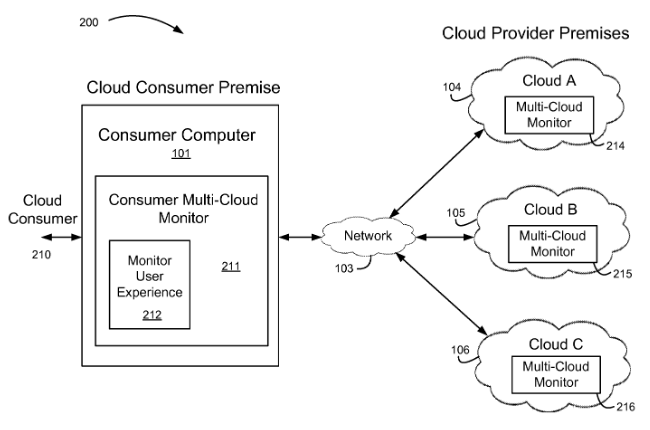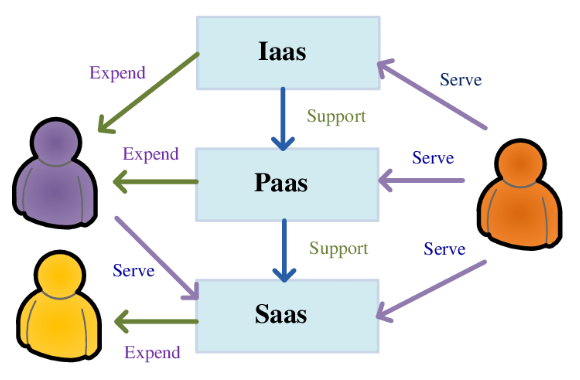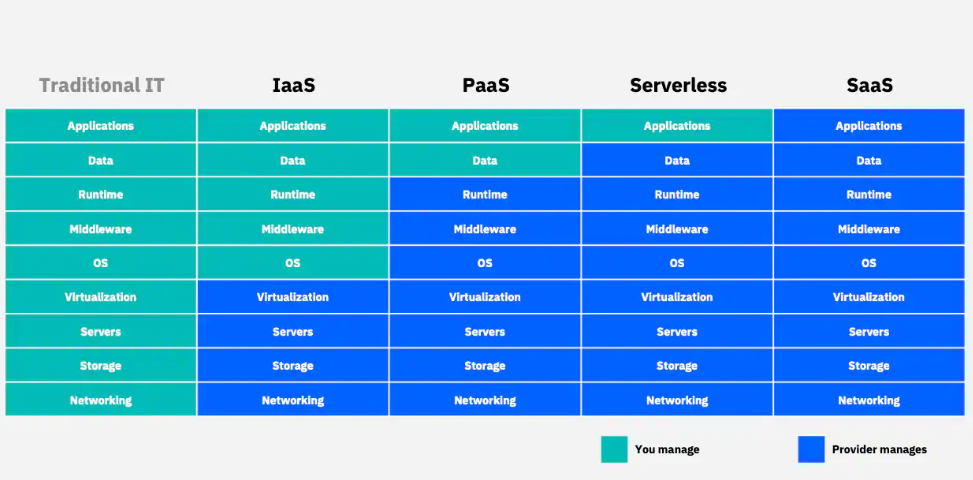Cloud Computing Assignment: A Literature Review on Digital Disruption
Question
Task
Choose a topic (e.g., an aspect of digital disruption) in Digital Transformation and provide a comprehensive literature review report on cloud computing assignment for the selected topic. In order to develop your literature review, you need to formulate the problem (topic component issues); explore the literature for relevant materials; evaluate the literature data and provide a structural model; then discuss the findings of the pertinent literature.
Answer
Problem Statement
As per the research on cloud computing assignment, Digital Disruption helped the world in assessing new technological advances in making works more efficient, errorless, fast, and sustainable. It is incorporated with presenting ground-breaking changes that lead various entities to adopt new-age technologies that can change both the environment and work process. Various digital innovations that have changed the work structure, such as cloud computing, the Internet of Things (IoT), virtual reality, transport, and food applications, and others. It can be considered as digital turbulence in its environment that enhances rapid and systemic influence on the digital changes (Skog et al., 2018).
In the current literature review, the evolution and various aspects of multi-cloud computing and its environment has been discussed. The base of the discussion has been derived from various peer-reviewed academic research papers. Multi-cloud computing technology is one of the most innovative aspects of digital disruption in various technical and non-technical entities. Multi-cloud computing is primarily a form or strategy that a company gets benefitted from using multiple cloud computing platforms in conducting a variety of activities. It makes that entity not being dependent on one particular cloud vendor. It helps in expanding the cloud infrastructure in an organization for making works fast and efficient.
In multi-cloud computing the environment, there is some basic monitoring method that helps the cloud customers in retrieving performance-related data to analyse the performance of the infrastructure (Flores & Hand, 2014). In the cloud service providing environment, highly reliable and available cloud service helps in satisfying and preventing potential revenue losses (Mesbahi et al., 2018). There is a vast range of cloud service providers, such as Amazon Web Services, IBM Cloud, VMware, Google Cloud Platform, Rackspace, etcetera, who assess the organization’s requirements and provide support, security, storage capacity, ease in administration, continuous software integration and reliability.
Literature Review
Impending cloud computing in an organization within the existing technology can enhance the services of the systems. According to (Hong et al., 2019) cloud computing is a new computer system. It maintains the data storage in the cloud and provides a secure data base for any organization. Cloud computing technology also faces issues like lack of security, management of the data, and when big data transfer from one cloud to another, the process becomes slow etcetera. To deal with the problems, the organization should implement multi-cloud computing in the system. In the multi-cloud system, various cloud networks can work with at the same time. Multi-cloud computing users can store the data into a private cloud and analyse the data on the other clouds. It can be helpful while doing multi-tasking at once.
Cloud computing gives services like developing the information system, wide network access etcetera. In information technology, service composition can be useful. Using the multi-cloud technology can improve the service of information technology and decrease the hazard of data wastage. According to (Asghari & Navimipour, 2016) cloud computing has numerous technological creations in the information technology system. Multi-cloud techniques can also optimize the organization's performances and also reduce the page loading times of the content. Multi-cloud methods not only optimize the fault-tolerance but also maintain the traffic in the system.
The usage of multi-cloud technology will decrease the cost of electricity for the organization. According to (Xu & Buyya, 2020) uses of cloud computing has increased but due to the fast-growing services of the cloud-computing has increased the huge amount of carbon emission in the environment. To reduce the carbon emission from the data centers, organizations are shifting the workloads from one cloud to the multi-clouds into different time zones. It will decrease the usage of brown energy and increase the usage of renewable energy in various locations. The research has shown that shifting the workload into the multi-cloud reduces 40% carbon emission in nature.
Some studies show that customers are using multiple clouds at the same time from different cloud providers, which increases the business value of the organization. According to (Heilig et al., 2017) the cloud marketing is becoming complex day by day. Choosing multiple cloud providers is causing a bad effect on the economy of the organization. Multi-clouds are managing the consumer-centric brokering schemes to stimulate different brokering scenario. By implementing the multi-clouds technologies, the organization can make strategic plans about the cost and performance aspect of the company.
Though creating a multi-cloud environment in a microservice-based application is complex and time-consuming work. According to (Sousa et al., 2016) multi-cloud computing has reduced vendor dependence and comply with the location regulations of the organization. It also manages the performance reliability and cost of the system. As the microservices work into a smaller part, it means every microservice needs individual platforms, database and monitoring, and scalability tools. An organization should build a multi-cloud environment which can control variability in existing clouds.
The ASPs has internationally distributed user that’s why their services are in the multiple clouds. According to (Salman et al., 2017) the cloud computing has been adopted by the application service provider to decrease the capital and operational cost of the provider. Through the multi-cloud technology, the ASPs can maintain their performances also the scalability and balancing the loading time of the content. However, big distributed multi-cloud also needs a large number of complex rules and configuration, which will become costly and time-consuming. There also security issues at the back end of multi-cloud computing.
The multiple cloud technology can manage the data in the clouds and will provide good services to the consumers. According to (Buyya & Son, 2018) cloud computing has been a utility-based computer resources management, which is being used worldwide. Recently, Software-Defined Networking (SDN) and Network Function Virtualization (NFV) has opened more opportunities in the clouds which enables automation configuration of the resources in cloud data centers. Multi-cloud can also manage the electricity consumption of the organization, as the service will be divided into the multiple cloud platforms, it will consume less time and electricity of the organization.
The security of the data in the cloud-based service is the main concern of an organization. According to (Pancholi & Patel, 2016) cloud computing makes major changes in the digital world. To save server cryptography is one of the important methods that an organization can follow. Cryptography can provide a balanced and unbalanced algorithm to secure the data in the clouds. Implementing cryptography manages the confidentiality and integrity of the data in the clouds. Symmetric algorithms advanced the data encryption standard into cloud-based technology, whereas asymmetric algorithms use different keys to encrypt the data.
The multi-cloud intrusions can help to detect the attack and sends alerts to the different nodes. According to (Abusitta et al., 2019) cloud computing has secured the data into the clouds. It has shown that designing the proactive multi-cloud intrusion detection system can give an alert about the suspicious intrusions and also applied aggregation methods to IDS' feedback. It will manage the data security in the clouds and helps the organizations not to lose any data. Proactive multi-cloud can help the organization to make the decision faster.
Multi-cloud technology offers services to the organization's infrastructure and manages the big data in the clouds. According to (Verginadis et al., 2018) cloud computing has been the most prominent delivering services over the internet. It helps to achieve the goals of the organizations and maintain the volume, variety, and velocity of the data. Multi-cloud technology also maintains the data scalability, data latency in the cloud. It helps to develop the services of the clouds and the security issues that the organization is facing. The main aspects of multi-cloud technology are to enables data-aware in the Metadata Schema. It helps to manage the data, controls the access in the data clouds, and distribute data-aware in the loosely coupled multi-cloud application.
Literature Data Evaluation
The main areas of retrieving data from a peer-reviewed literature discussion are related to the research objectives. The motive of the current discussion can be understanding various specifications and areas of multi-cloud computing strategy as a part of disruptive innovation. It is also an integral part of the technology transformation in the current situation. The multi-cloud computing process with the help of the virtualization of network function offers effective flexibility and cost-efficiency to the organization (Gupta et al., 2019). It is required to be understood the flexibility and scalability that can be assessed from the multi-cloud computing system is better than one single cloud service provider.
It has been identified that the multi-cloud computing process helps an organization in acquiring ultimate data space with appropriate security protection and system integrity. Cloud service often requires scalability according to the service requirement in an organization. Multi-cloud computing can be considered as a multiagent-based system that is currently highly acceptable for assessing improvement in a wide-scale environment (Kendrick et al., 2018). It has been identified that the adoption of a multi cloud computing strategy helps in reducing more than 50% of energy cost in each composition (Kendrick et al., 2018).
Cloud computing is considered the future of every operational sector in achieving competitiveness and agility. Cloud computing technology helps organizations in reducing operational costs on server management, storage acquisition, and management and enabling having an efficient system. More than 80% of the organizations currently using a multi-cloud computing strategy combining public and multiple private cloud hosts in improving the service quality.
Structural Model

Figure: Alignment between consumer and provider premises in a cloud infrastructure (Flores & Hand, 2014)
The consumer premise consists of the main consumer device for accessing cloud service, identification of user experience, and multi-cloud computing process. On the other hand, multiple providers provide services via a single network system.

Figure: Cloud Computing Structure (Abdullah-Al-Shafi et al., 2016)
Cloud computing technology is consisting of various service structures, such as IaaS for Infrastructure-as-a-Service that provide services to the operating system, applications, and middleware. PaaS or Platform-as-a-service provide both software and hardware to maintain the cloud infrastructure. And SaaS for Software-as-a-Service generates and maintains software from a third-party provider to conduct operational works.

Table: An understanding of service division between an entity (as you) and the cloud service provider in different structures (Vennam, 2020)
IBM, as a cloud service provider, has generated a table where they divided various service structures, such as IaaS, SaaS, PaaS, and serverless cloud computing and explained the role of traditional IT service management, such as applications, runtime, middleware, storage, servers, networking, etcetera. It color-coded the areas that need to be managed by the entity and others that the providers will manage.
Discuss the Findings of the Literature
In the literature review section, the current assessment has discussed the multi-cloud computing infrastructure for microservices application, in the machine learning process, in software development, enhancement of security structure on cloud platforms, and deep learning process. In the federated cloud environment at multi-cloud computing set up, end-to-end encryption and security requirement helps in managing workflows to standardize formalities in multiple domains (Dickinson et al., 2018). Various organizations from both technical and non-technical backgrounds outsource their cloud infrastructure to expand the company's capacity and efficiency. It can be observed in various organizations that use data-intensive works that help in maintaining security specifications (Dickinson et al., 2018).
The digital transformation is changing the entities in adapting software systems at their core to continuously fulfil the requirements from the organizational goals, dynamic markets, robust workflow, and assessing agility into the operations (Muntés-Mulero et al., 2018). The increasing technological transformation in various organizations is the result of disruptive innovations. The discussion of the peer-reviewed journals has described the requirements of multi-cloud computing infrastructure in expanding the cloud storage and service system in an organization. In one of the research papers, it has also been discussed that how the multi cloud computing environment can analyse data related to the renewal energy management system. The most successful and important assets of adopting a multi-cloud computing strategy are its scalability and flexibility in managing a wide range of activities.
References
Abdullah-Al-Shafi, M., Bahar, A. N., & Saha, S. (2016). Mobile on-demand computing: The future generation of cloud. International Journal of Future Generation Communication and Networking, 9(11), 161–178.
Abusitta, A., Bellaiche, M., Dagenais, M., & Halabi, T. (2019). A deep learning approach for proactive multi-cloud cooperative intrusion detection system. Future Generation Computer Systems, 98, 308–318.
Asghari, S., & Navimipour, N. J. (2016). Service composition mechanisms in the multi-cloud environments: a survey. Int. J. New Comput. Archit. Appl.(IJNCAA), 6, 40–48.
Buyya, R., & Son, J. (2018). Software-defined multi-cloud computing: a vision, architectural elements, and future directions. International Conference on Computational Science and Its Applications, 3–18.
Dickinson, M., Debroy, S., Calyam, P., Valluripally, S., Zhang, Y., Antequera, R. B., Joshi, T., White, T., & Xu, D. (2018). Multi-cloud performance and security driven federated workflow management. IEEE Transactions on Cloud Computing, 1-15.
Flores, R. H., & Hand, L. S. (2014). Performance monitor for multiple cloud computing environments. Google Patents.
Gupta, L., Salman, T., Zolanvari, M., Erbad, A., & Jain, R. (2019). Fault and performance management in multi-cloud virtual network services using AI: A tutorial and a case study. Computer Networks, 165, 106950.
Heilig, L., Buyya, R., & Voß, S. (2017). Location-aware brokering for consumers in multi-cloud computing environments. Journal of Network and Computer Applications, 95, 79–93.
Hong, J., Dreibholz, T., Schenkel, J. A., & Hu, J. A. (2019). An Overview of multi-cloud computing. Workshops of the International Conference on Advanced Information Networking and Applications, 1055–1068.
Kendrick, P, Baker, T, Maamar, Z, Hussain, A, Buyya, R and Al-Jumeily, D (2018) An Efficient Multi-Cloud Service Composition Using A Distributed Multiagent-based, Memory-driven Approach. IEEE Transactions on Sustainable Computing. ISSN 2377-3782
Mesbahi, M. R., Rahmani, A. M., & Hosseinzadeh, M. (2018). Reliability and high availability in cloud computing environments: a reference roadmap. Human-Centric Computing and Information Sciences, 8(1), 20.
Muntés-Mulero, V., Ripolles, O., Gupta, S., Dominiak, J., Willeke, E., Matthews, P., & Somosköi, B. (2018). Agile risk management for multi-cloud software development. IET Software, 13(3), 172–181.
Pancholi, V. R., & Patel, B. P. (2016). Enhancement of cloud computing security with secure data storage using AES. International Journal for Innovative Research in Science and Technology, 2(9), 18–21.
Salman, T., Bhamare, D., Erbad, A., Jain, R., & Samaka, M. (2017). Machine learning for anomaly detection and categorization in multi-cloud environments. 2017 IEEE 4th International Conference on Cyber Security and Cloud Computing (CSCloud), 97–103.
Skog, D. A., Wimelius, H., & Sandberg, J. (2018). Digital disruption. Business & Information Systems Engineering, 60(5), 431–437.
Sousa, G., Rudametkin, W., & Duchien, L. (2016). Automated setup of multi-cloud environments for microservices applications. 2016 IEEE 9th International Conference on Cloud Computing (CLOUD), 327–334.
Verginadis, Y., Patiniotakis, I., & Mentzas, G. (2018). Metadata schema for data-aware multi-cloud computing. 2018 Innovations in Intelligent Systems and Applications (INISTA), 1–9.
Vennam, S. (2020). Cloud Computing. Retrieved from ibm.com: https://www.ibm.com/cloud/learn/cloud-computing
Xu, M., & Buyya, R. (2020). Managing renewable energy and carbon footprint in multi-cloud computing environments. Journal of Parallel and Distributed Computing, 135, 191–202.












